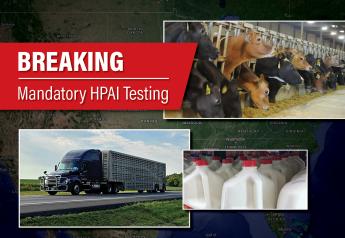Feedyard Inventories Building
By: John Nalivka, Sterling Marketing Inc.
USDA’s May 1 Cattle on Feed report indicated a 1% increase in the inventory from a year ago with cattle placed on feed during April posting a 7% increase while fed cattle marketed during the month were up 1% from a year earlier. My thinking on feedlot activity since the beginning of the year is consistent with this report. This is the third consecutive month of year-over-year increases in on feed inventories. At the same time, breakeven prices have fallen into much more manageable territory and feedlots have finally found the light at the end of tunnel and black ink (unhedged)!
The challenge now is to maintain positive margins on current and future placements, whether through hedging opportunities or aggressively placing cattle at continually lower break-even prices. I would opt for the latter as it offers greater assurance. It simply means feeder cattle prices (750-800 lbs.) have to fall toward the $130 range which in turn will generally leave break-evens in the $110 to $115 range assuming cost of gain in the low $70s.
Taking a quick look at the math, current break-even prices for cattle purchased or retained at a market value in the $150 area and placed on feed with corn at $4.40 / bu. (basis and freight into the feedlot on $3.95 / bu.) renders a break-even price of $117 / cwt. in October. The October futures is hovering around $113 / cwt. at this writing. If the feeder value is reduced to $137 / cwt. with the same cost of gain, the break-even price falls to $110 / cwt. That is quite a difference.
Feedlot placement activity will continue at a pace that will maintain feedlot inventories increasing on a year-over-year basis throughout the remainder of 2016. Carcass weights have declined seasonally since the beginning of the year and positive feeding margins will support continuation of that trend in the short term. So, while fed cattle numbers will increase into the summer, there will be some offset from lighter weights. However, weights will increase seasonally from August into the 4thquarter as will available cattle supplies as I have already indicated.
The beef industry is transitioning into increased cyclical supplies as the result of herd building. In addition, total per capita meat supplies will be 6% higher than the 2014 low. Part of the transition is a realignment of prices across the supply chain which in turn brings the industry into balance.







